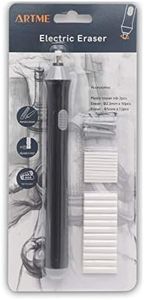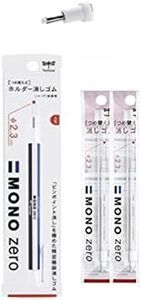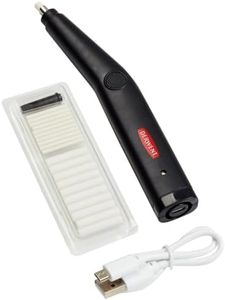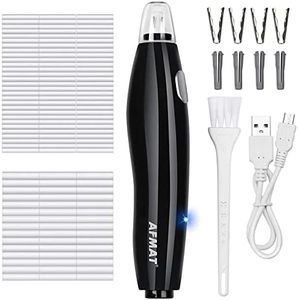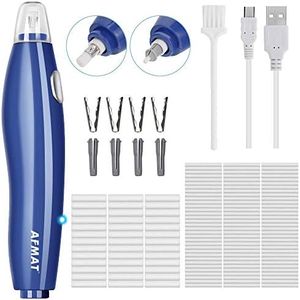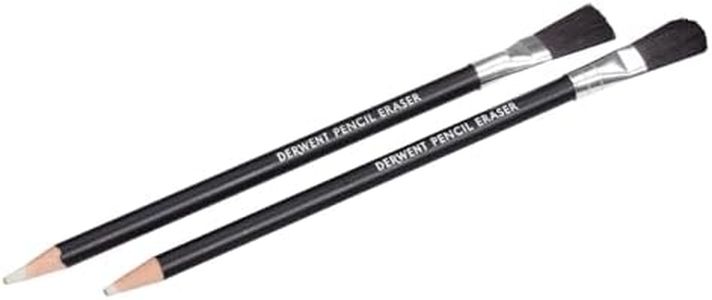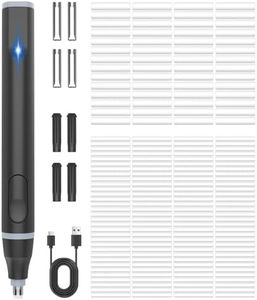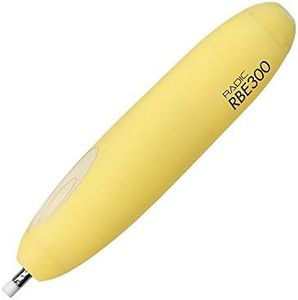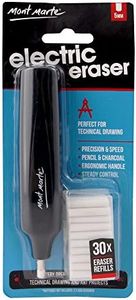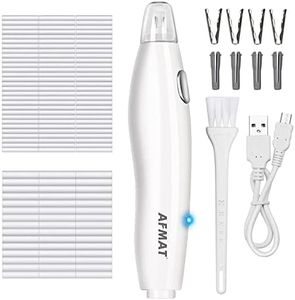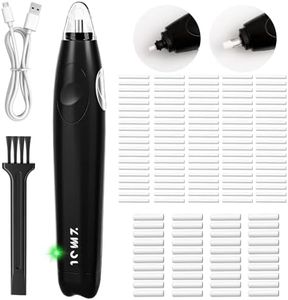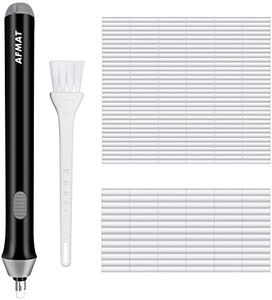We Use CookiesWe use cookies to enhance the security, performance,
functionality and for analytical and promotional activities. By continuing to browse this site you
are agreeing to our privacy policy
10 Best Electric Erasers
From leading brands and best sellers available on the web.Buying Guide for the Best Electric Erasers
Electric erasers are handy tools for artists, students, architects, and anyone who routinely needs to erase with precision and speed. They use a small battery-powered motor to spin a replaceable eraser tip, giving more control and accuracy than standard manual erasers. When choosing an electric eraser, focus on how you'll be using it — whether for delicate graphite detail in drawings, frequent classroom corrections, or technical design work — since different specs make a big difference in comfort, efficiency, and results.Eraser Tip Size and ShapeThe eraser tip is the part that actually removes the pencil marks. Tip size and shape are important because they determine how precise and effective you can be when erasing. Small, fine tips are best for detailed work such as intricate drawings or technical drafting, allowing you to erase tiny lines or spots without disturbing surrounding areas. Larger or broader tips work better for erasing bigger sections quickly, like correcting large written mistakes. Consider how much detail your typical work involves—if you often need to erase in tight spots, prioritize a set with interchangeable fine tips; for general use, a standard-sized tip may suffice.
Motor Power and SpeedThe power and speed of the motor determine how effectively the eraser head moves and removes marks. A motor that's too weak might not erase completely, requiring more effort from you, while a very strong or fast motor might be harder to control precisely. Low-to-moderate speed erasers are ideal for delicate tasks where accuracy matters more than speed. Higher-powered options erase quickly and work well for tougher pencil marks or busy environments where efficiency is a must. Match your typical erasing needs: artists may want gentler, more controllable motors, while students or professionals working at speed may prefer a stronger motor.
Ergonomics and GripErgonomics refers to how comfortable and easy an electric eraser is to hold and use for extended periods. Good grip design is crucial to prevent hand fatigue, especially if you use the eraser often for detailed work. Some erasers feature soft, non-slip materials or a contoured shape for better handling, while others have simple, straight barrels that might not be as comfortable. People with smaller hands, or those requiring precision, should look for slender, lightweight models with textured grips, while those doing less frequent or less detailed work can manage with a bulkier design.
Battery Type and LifeElectric erasers are generally powered by batteries, and the type and life of these batteries affect how long you can use the eraser before changing or recharging them. Some use standard replaceable batteries, while others have built-in rechargeable batteries. If you need portability or plan to use your eraser out and about, consider battery life and charging options—long-lasting batteries or models with convenient USB charging are ideal for those who erase often. If erasing will be occasional or mostly at a desk, battery type may be less critical.
Replacement Eraser AvailabilityBecause the eraser tip wears down with use, being able to easily find and replace tips is important. Some electric erasers come with a generous supply of replacement erasers; others use non-standard shapes that may be harder to replace. If you'll use the eraser frequently (like artists or students), ensure you pick a product with readily available and affordable replacement erasers. For occasional use, included refills may be enough.
